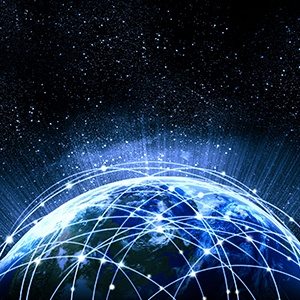 One of hottest topics in technology this year is the Internet of Things (IoT), which Gartner defines as “the network of physical objects that contain embedded technology to communicate and sense or interact with their internal states or the external environment.” The following statistics speak to the prevalence of IoT:
One of hottest topics in technology this year is the Internet of Things (IoT), which Gartner defines as “the network of physical objects that contain embedded technology to communicate and sense or interact with their internal states or the external environment.” The following statistics speak to the prevalence of IoT:
- The healthcare IoT market segment is poised to hit $117 billion by 2020.
- The IoT has a potential economic impact of $3.9 to $11.1 trillion per year by 2025.
- Sensors, modules and connectivity account for more than 50 percent of spending on the IoT, followed by IT services and software.
- An estimated 36 percent of companies in North America had IoT initiatives in 2015.
- Nearly $6 trillion will be spent on IoT solutions over the next five years.
- There are forecast to be approximately 212 billion Internet-connected things (healthcare instruments, tracking devices, wearables, etc.) by the end of 2020.
- IoT technology has the potential to save more than $200 billion through chronic disease management.
- The use of IoT is expected to grow fastest in healthcare over the next five years.
Perhaps the biggest area in which the IoT may impact healthcare is remote patient monitoring. Through the use of wearable sensor devices, physicians and other clinicians are able to remotely monitor patients, especially those with chronic diseases, resulting in the capability for earlier interventions, a decrease in unnecessary appointments, lower costs and improved patient outcomes. These IoT devices have the capacity to monitor a wide range of patient information such as temperature, blood pressure, heart rate, glucose level and more.
Following is a list of additional benefits that may be achieved through the use of IoT technology:
- Better understanding of disease and treatment to manage the health of populations;
- Improved quality and effectiveness of service for the elderly and patients who require constant supervision;
- Automatic transmission of patient data to EHR systems for increased accuracy and enhanced patient care;
- Combination of smart sensors, wireless technology and location-based tracking to optimize the flow of patients, employees and equipment;
- Increased flow of patient data for population health data;
- Integration of data from separate medical devices and disparate systems for enhanced analytics;
- Streamlined transition to digital data to decrease costs and improve patient outcomes;
- Increased efficiency and sharper focus on high quality patient care.
Learn More
At Syntrix Consulting, our certified consultants have the knowledge and experience to help you integrate multiple technologies and IT systems to optimize your clinical, financial and operational performance. Contact us for a free consultation.
For more information on healthcare analytics, Epic reporting, and how you can have a successful implementation, download our FREE eBook:
